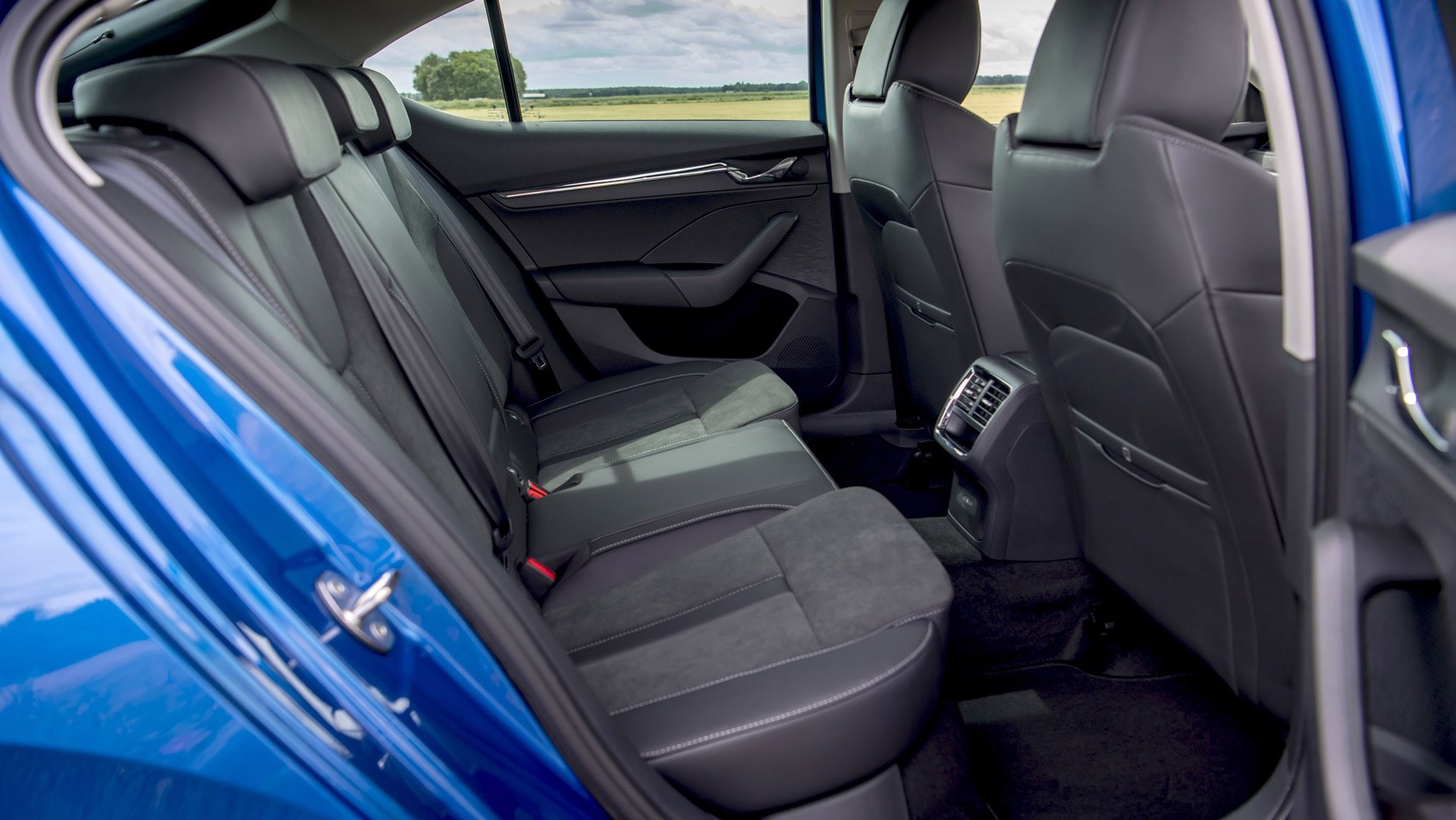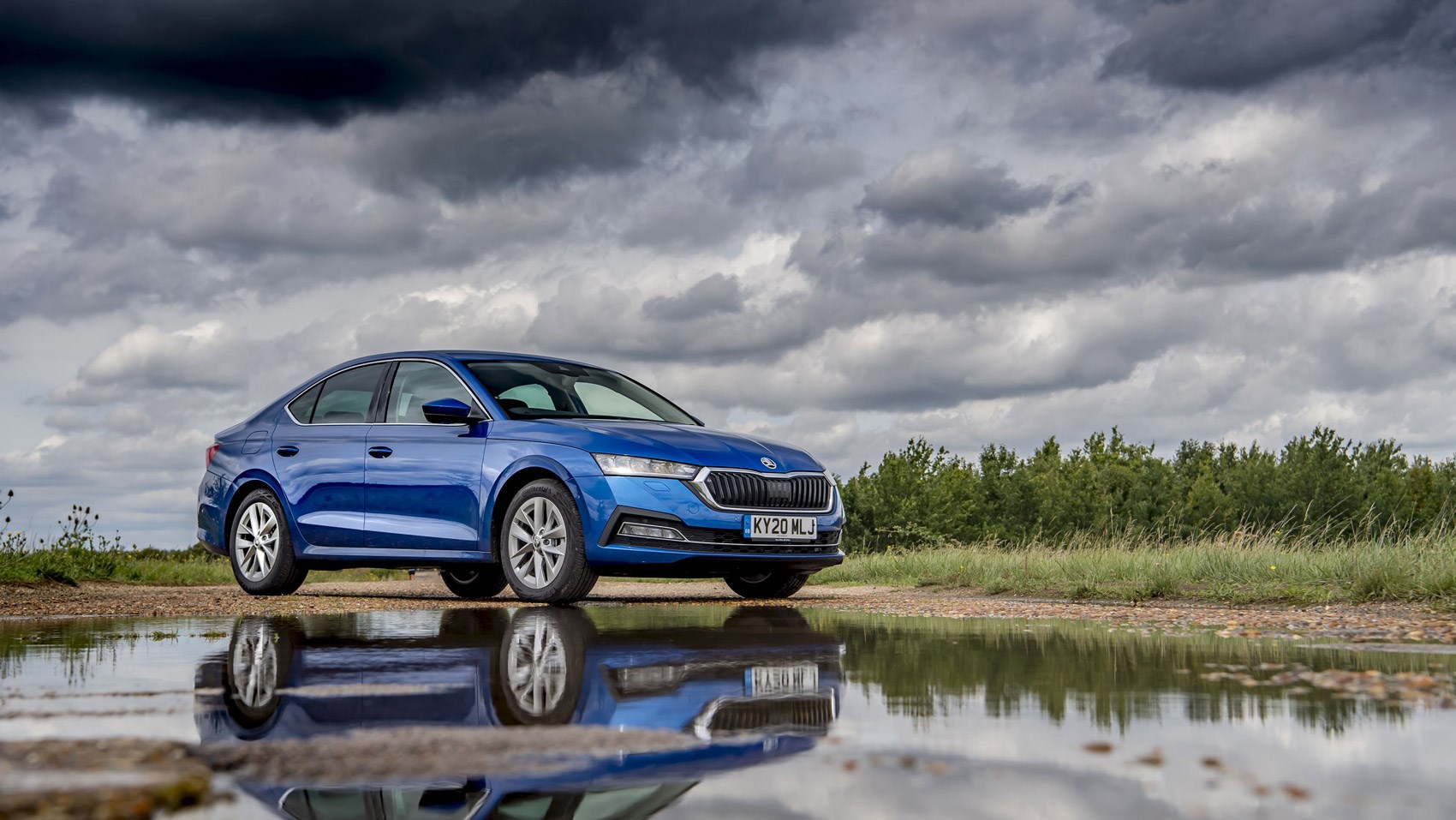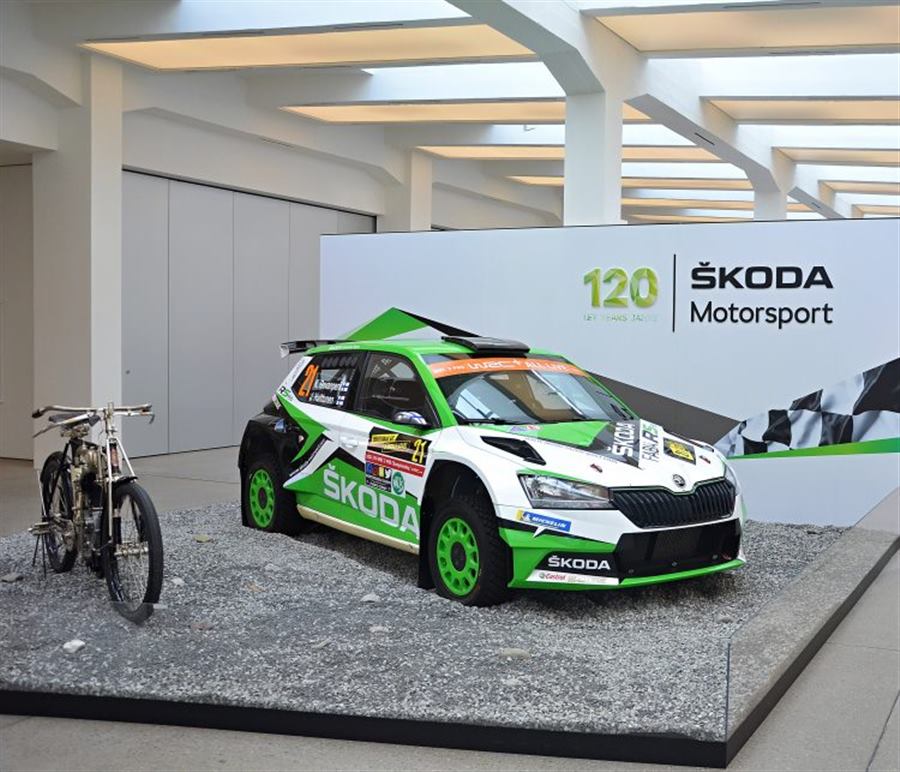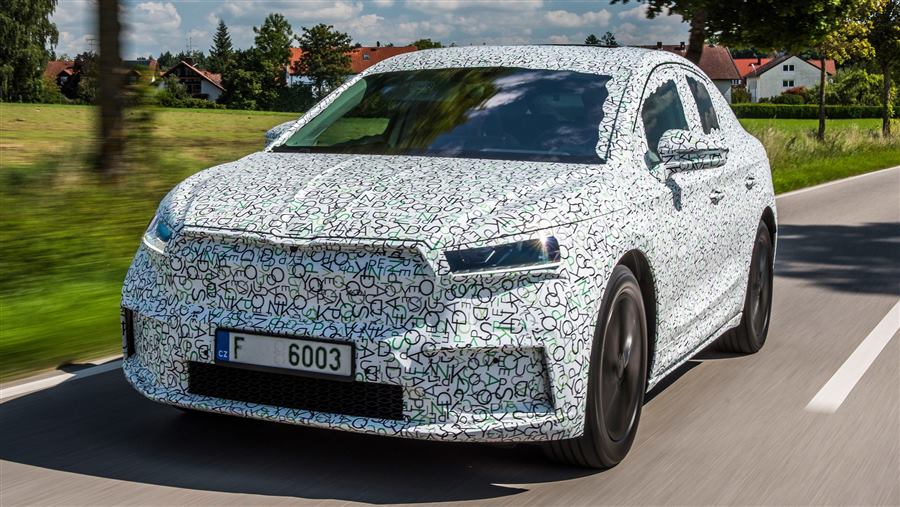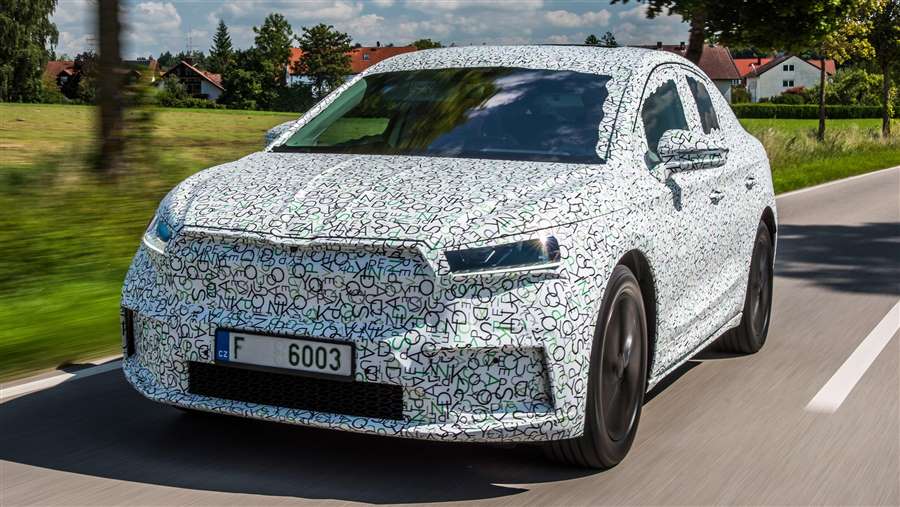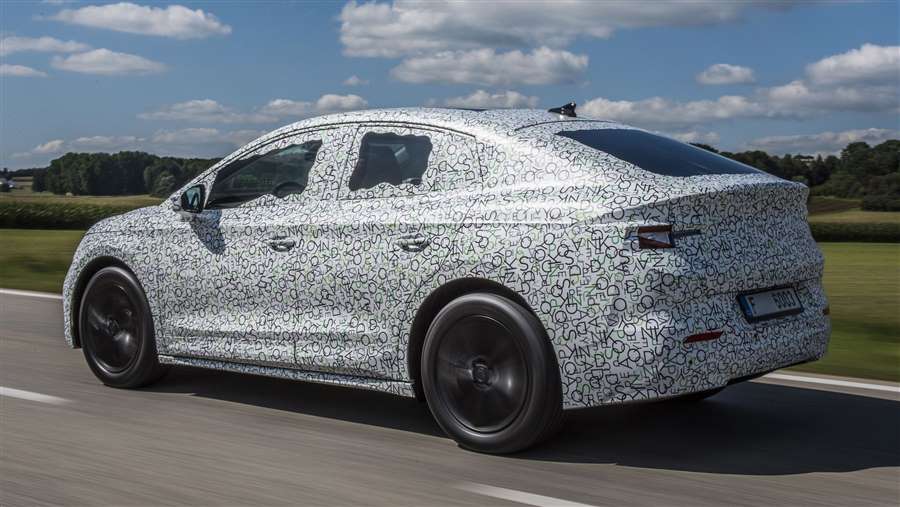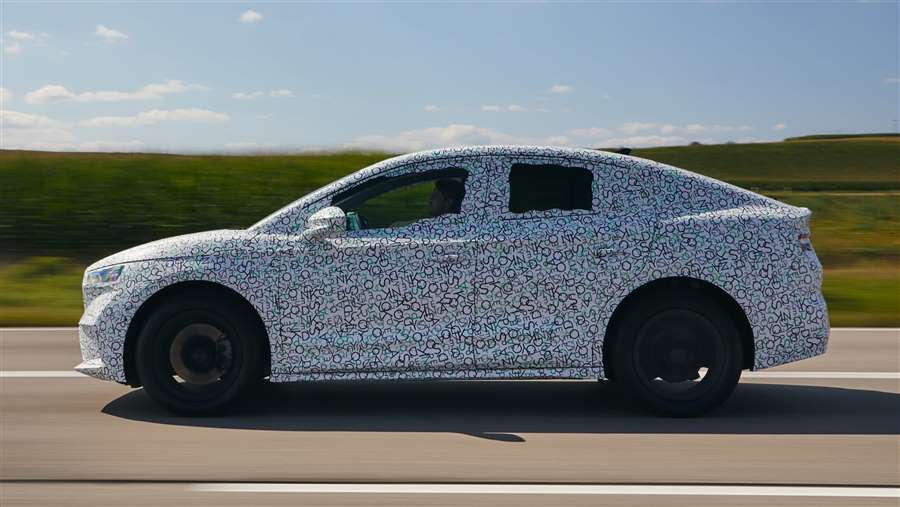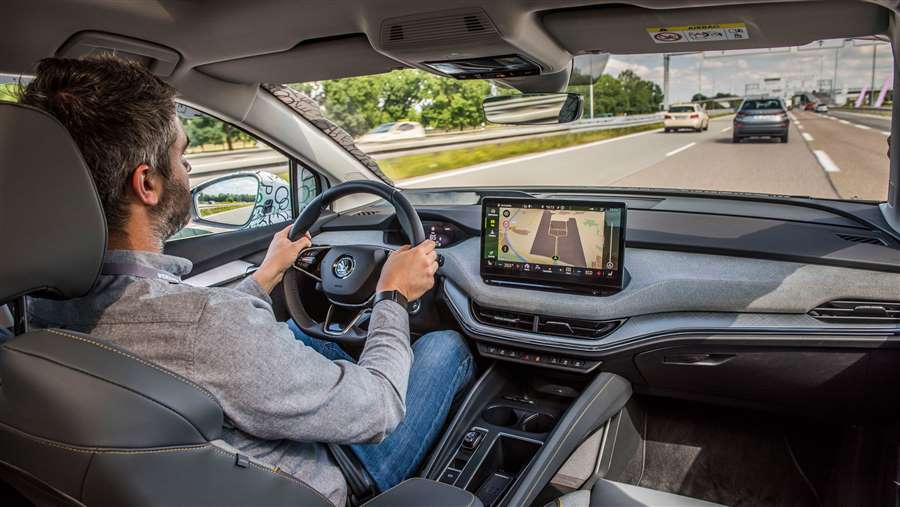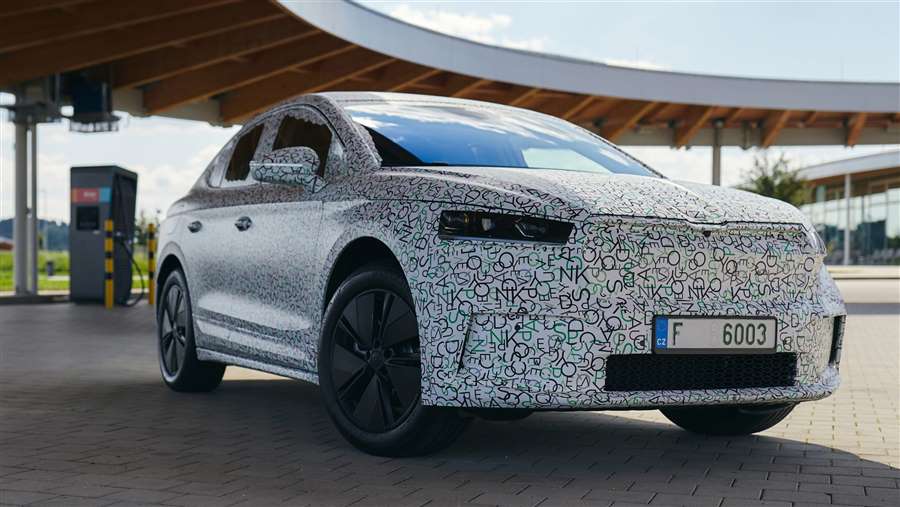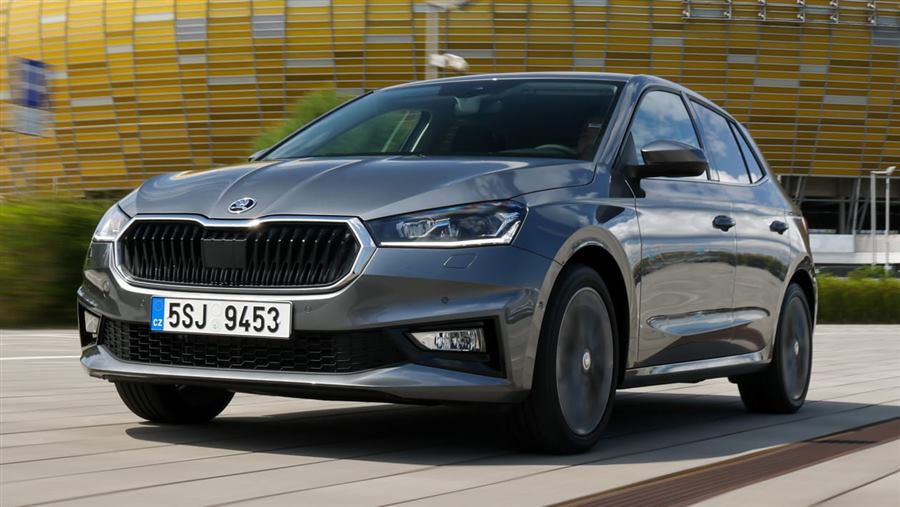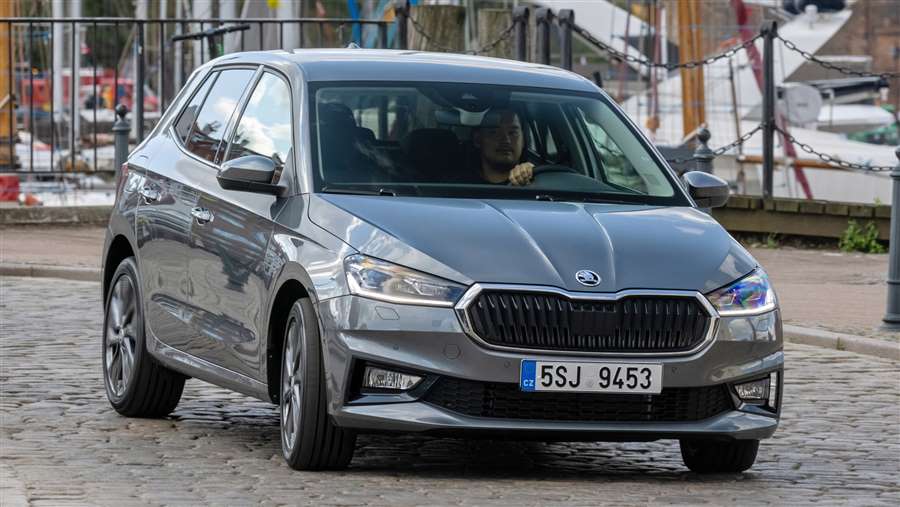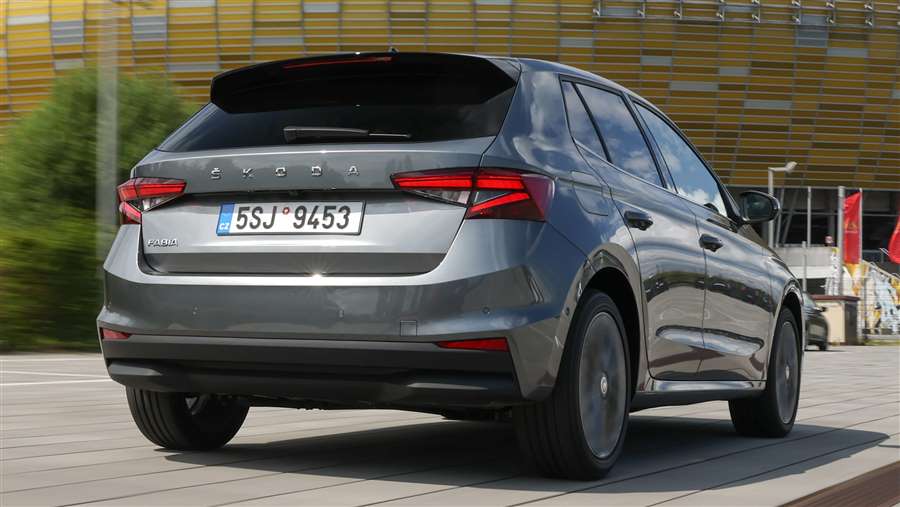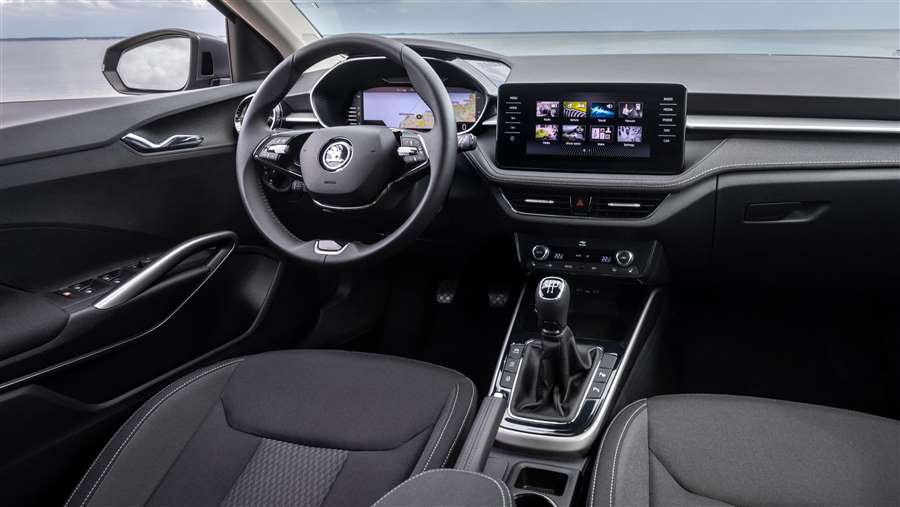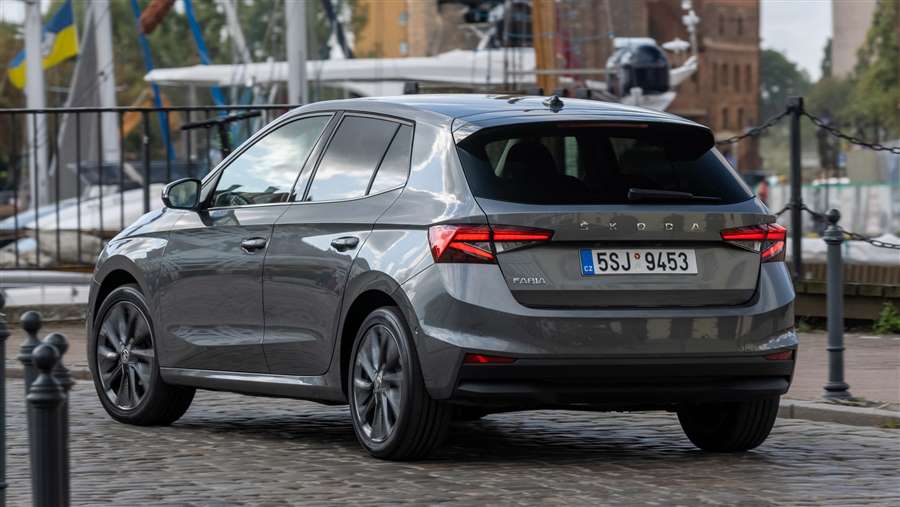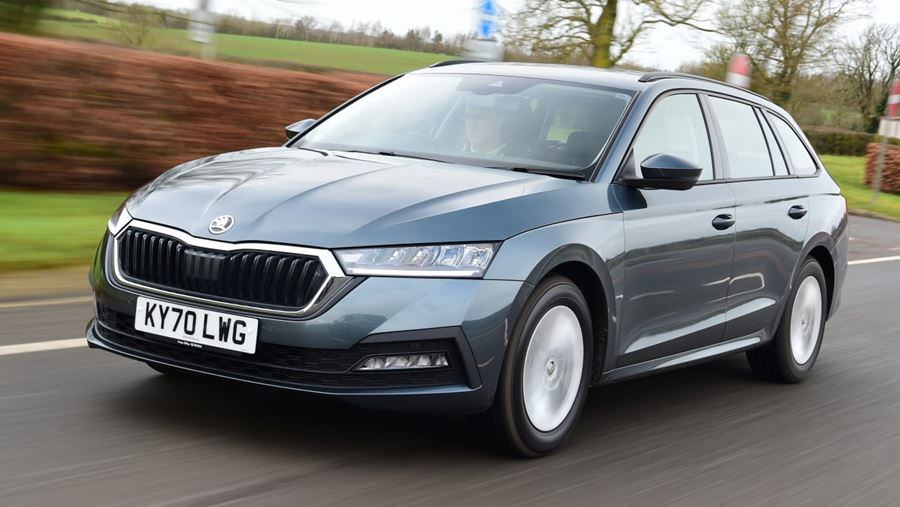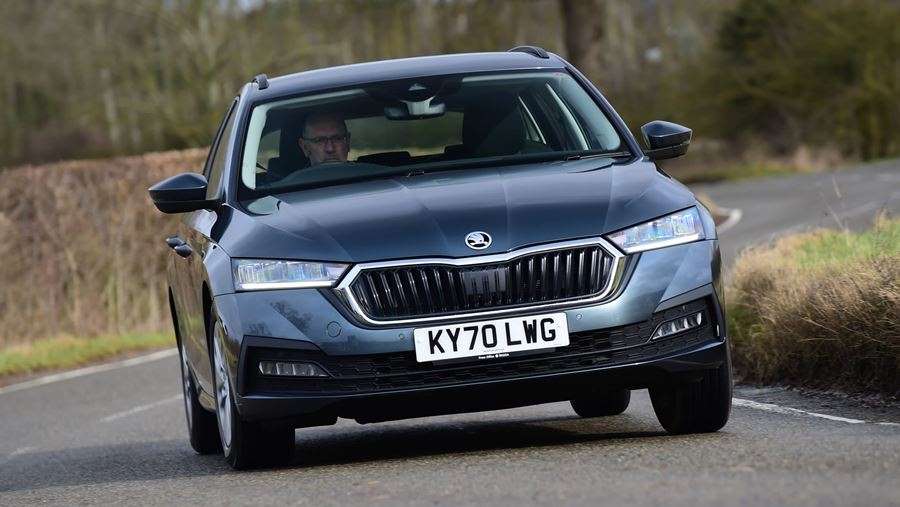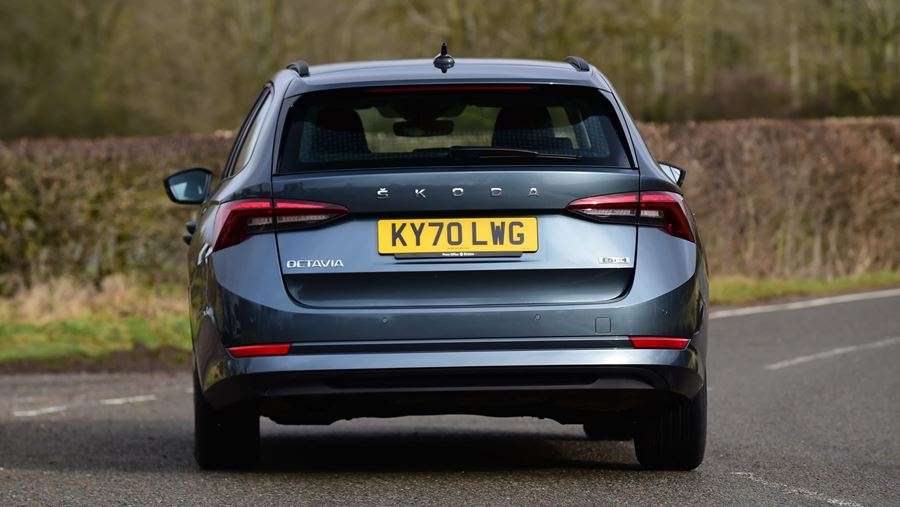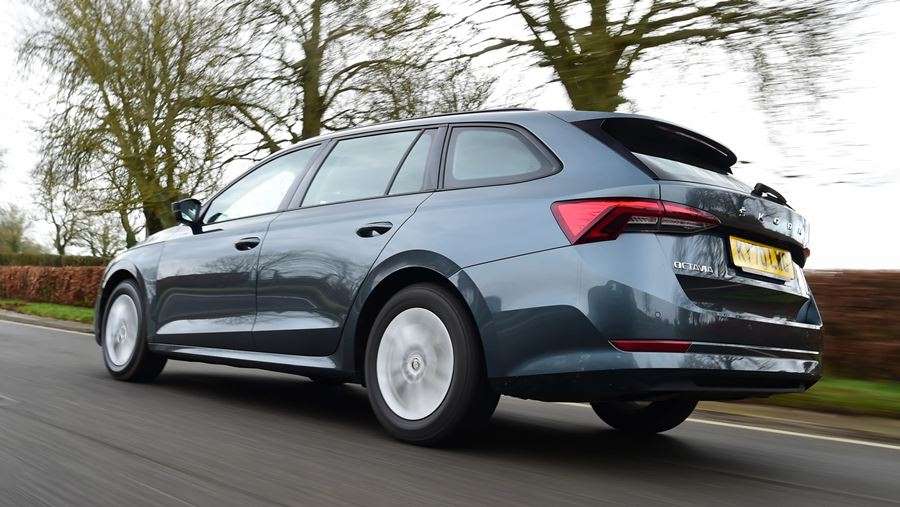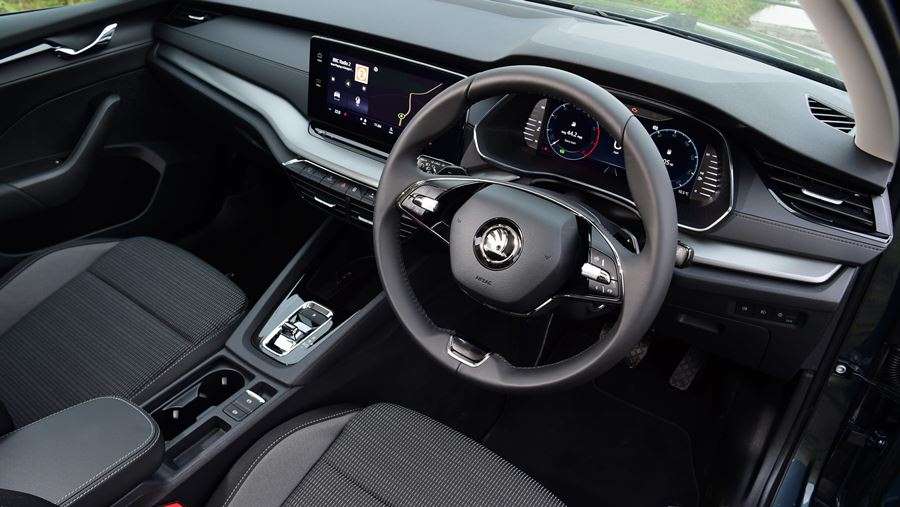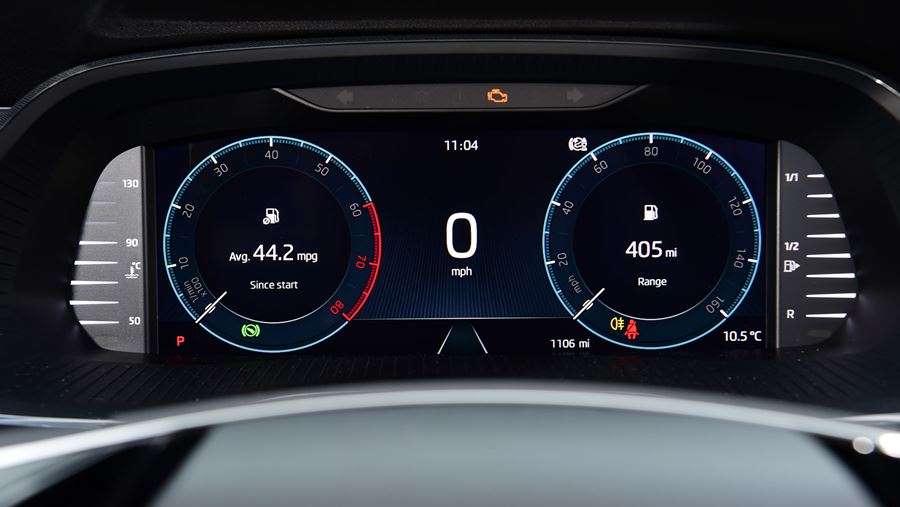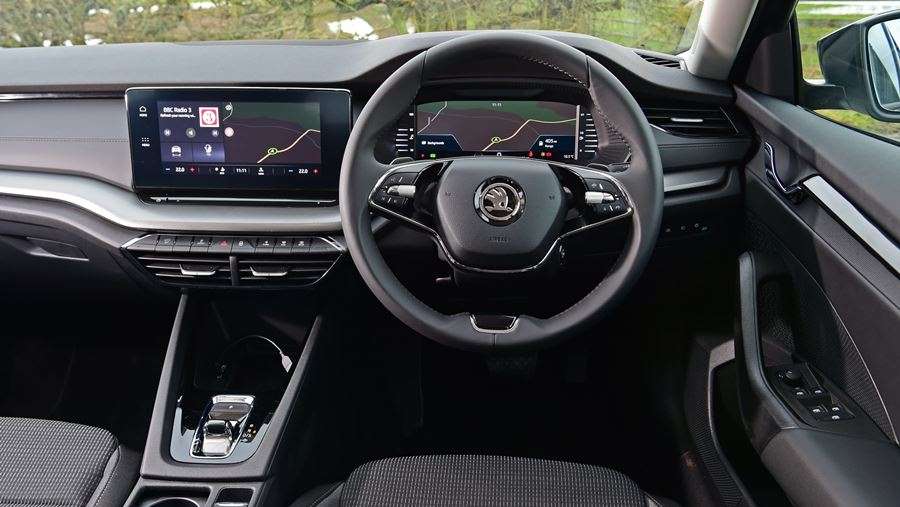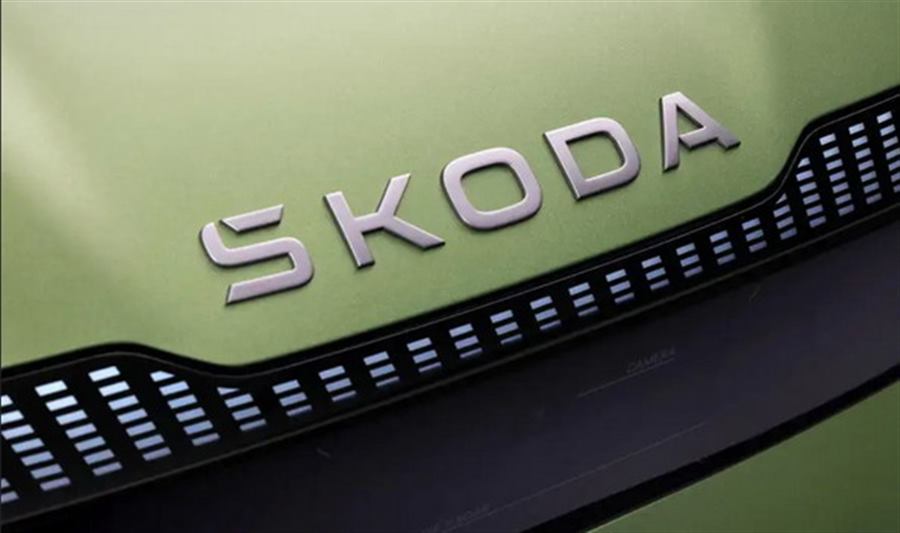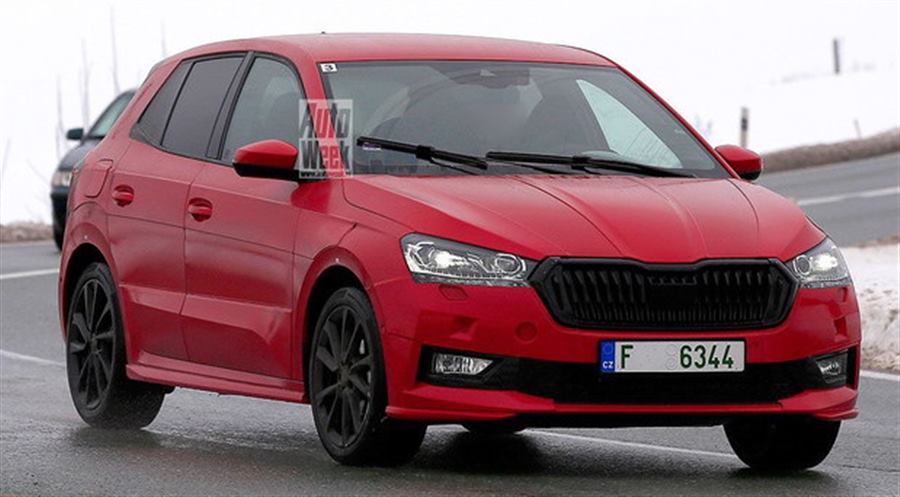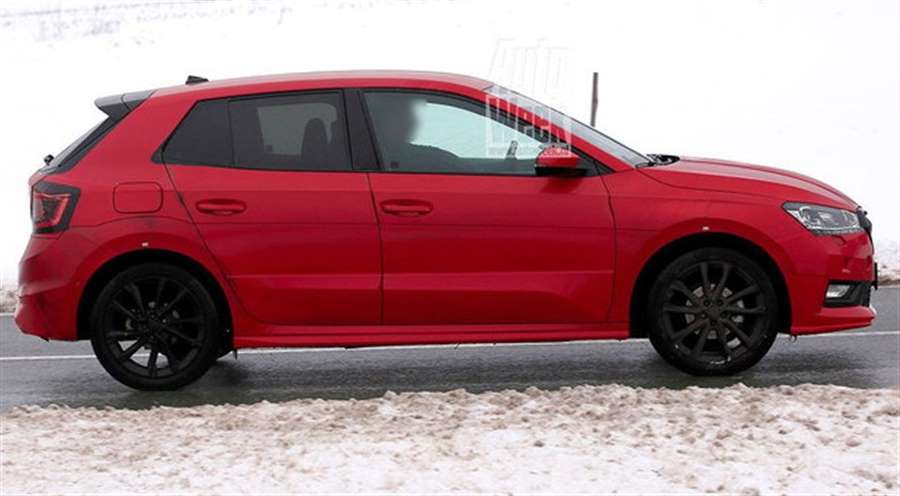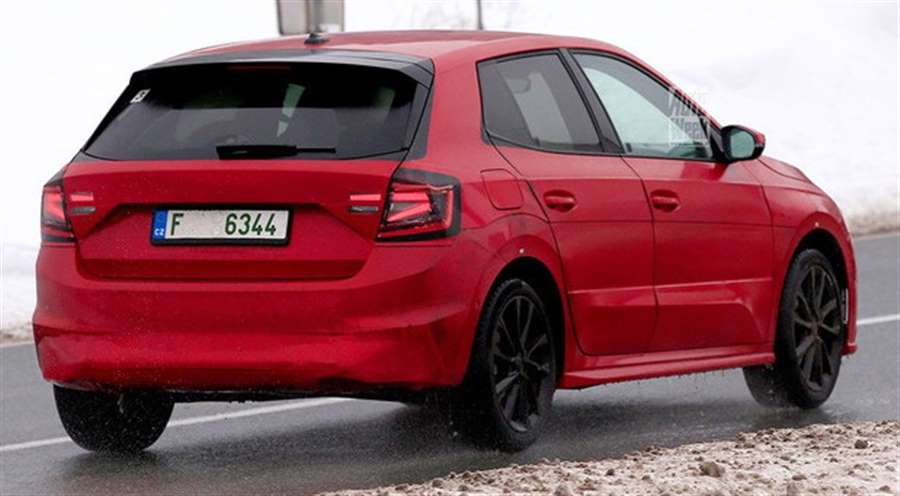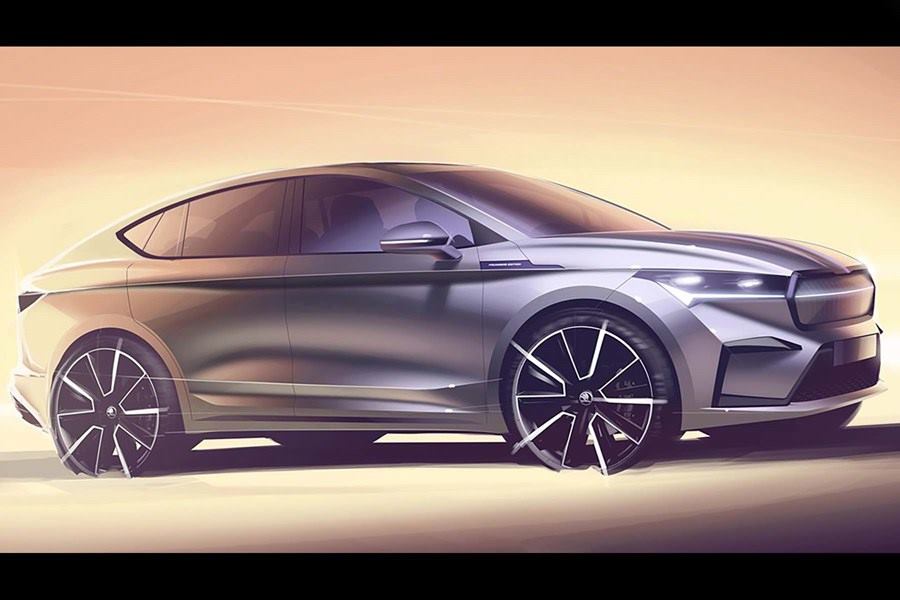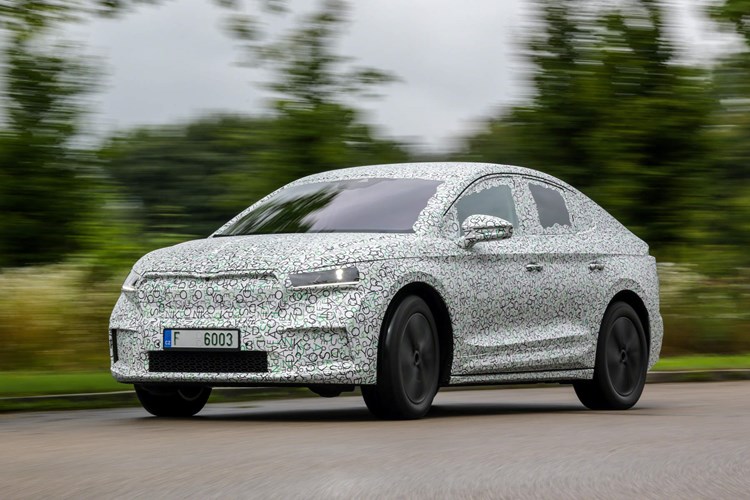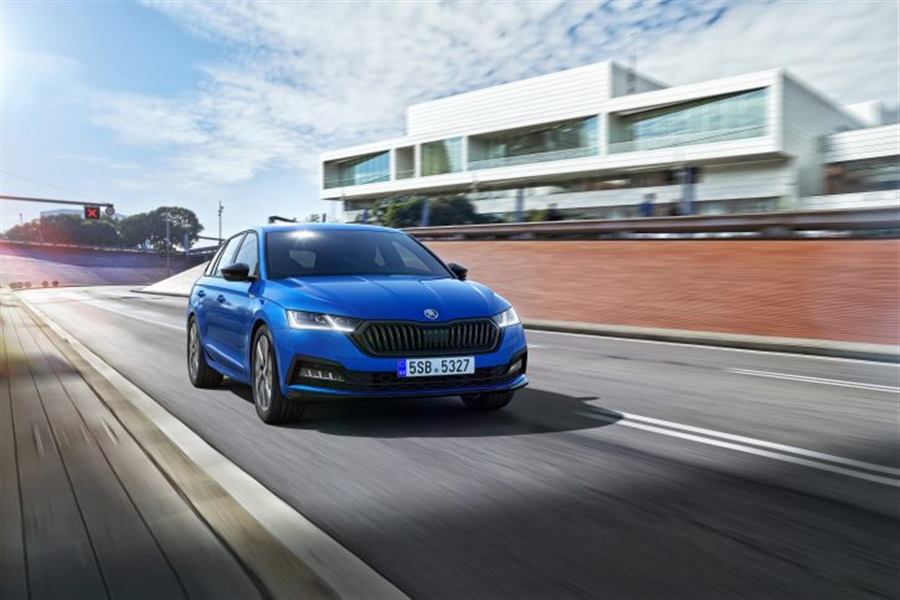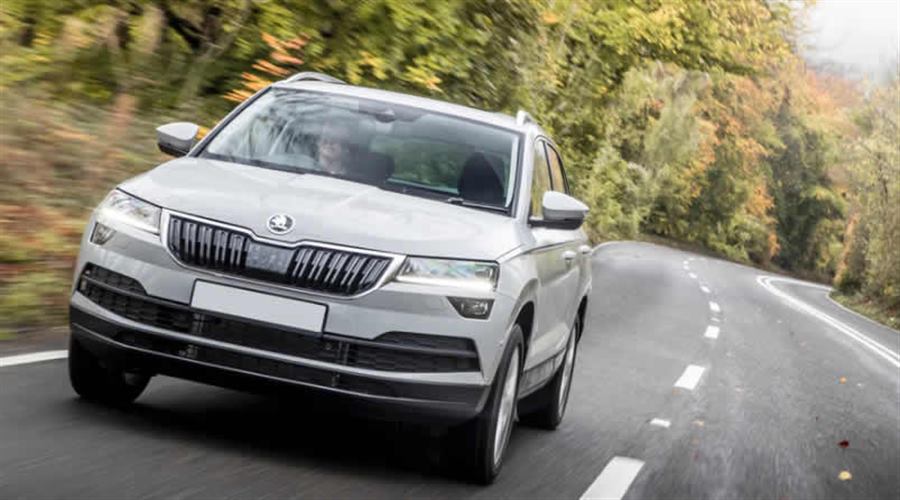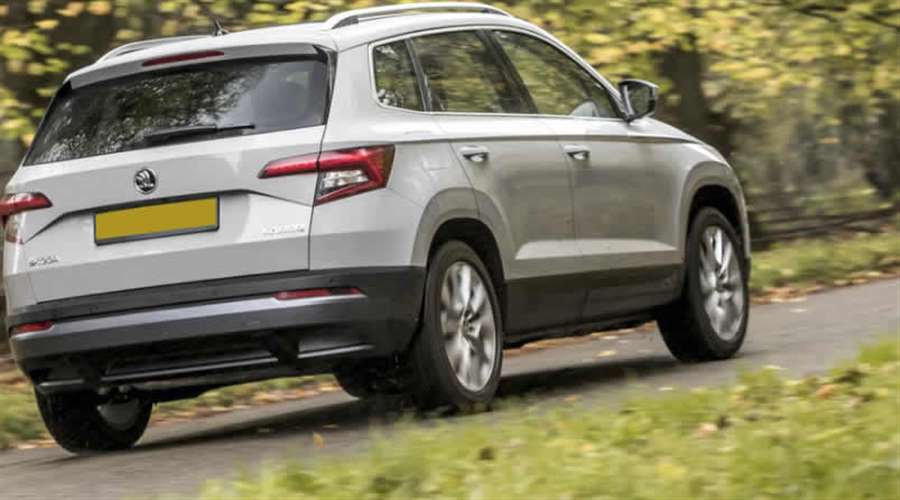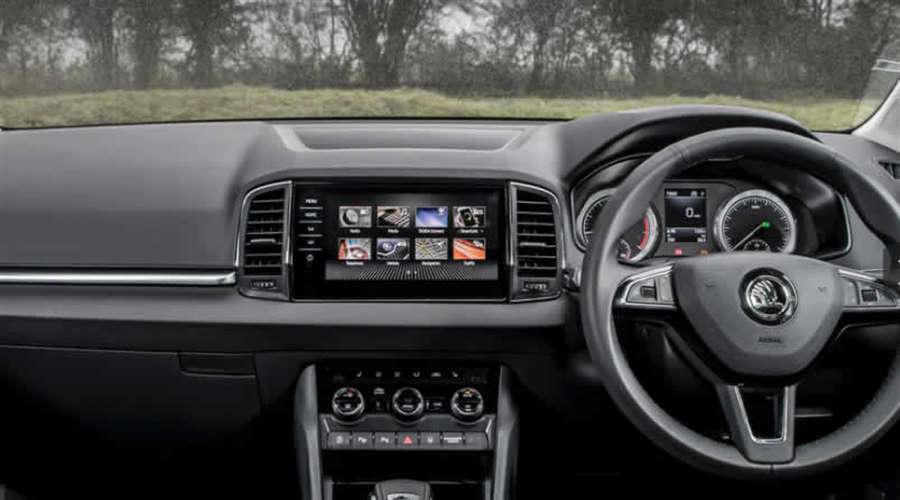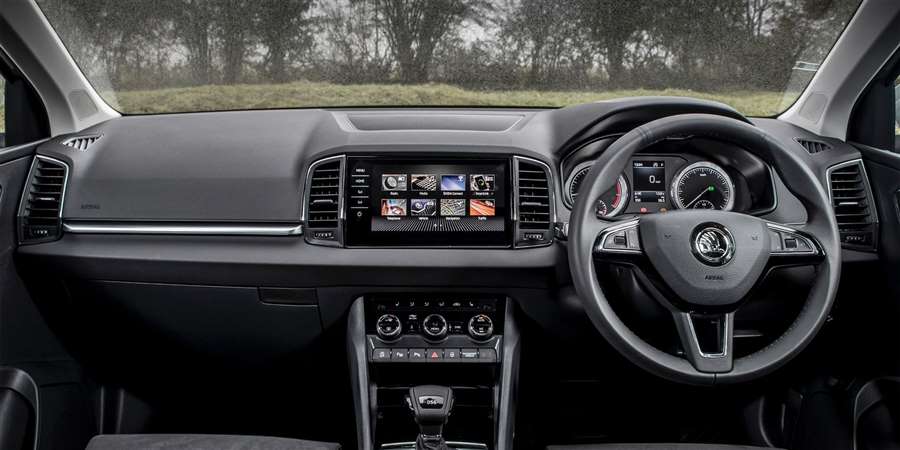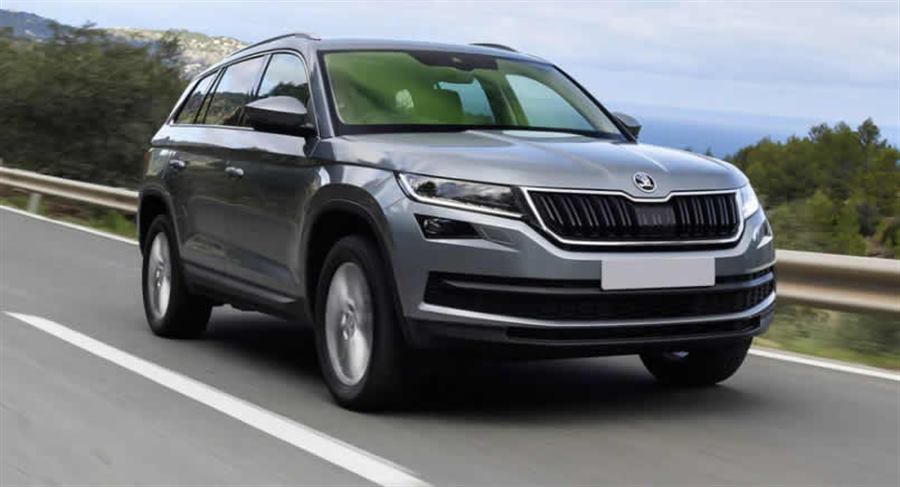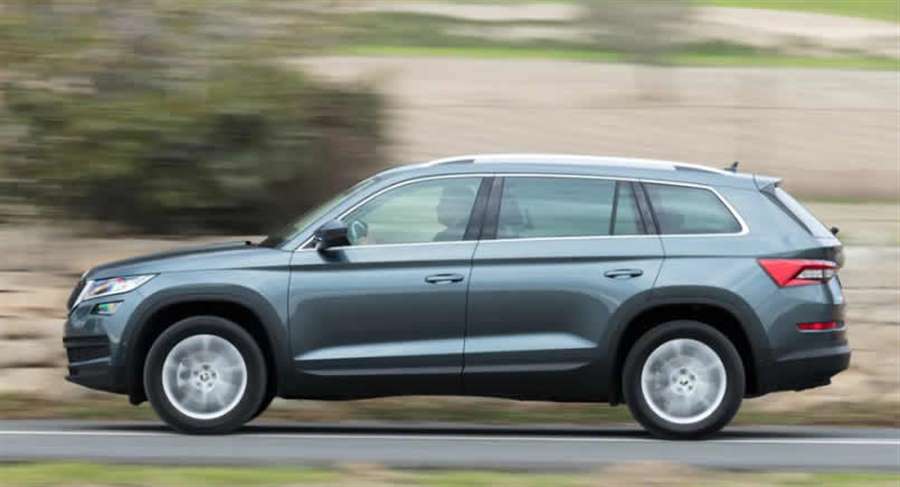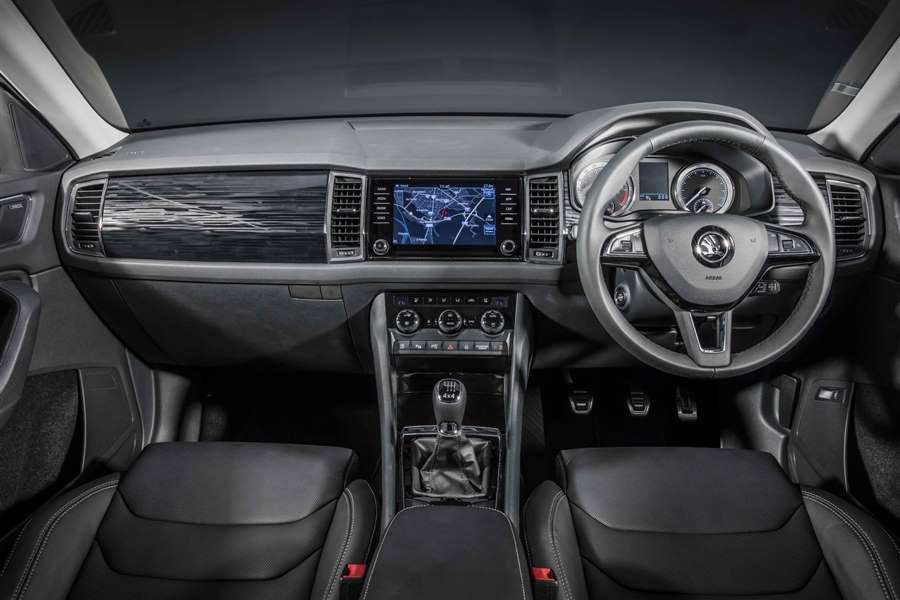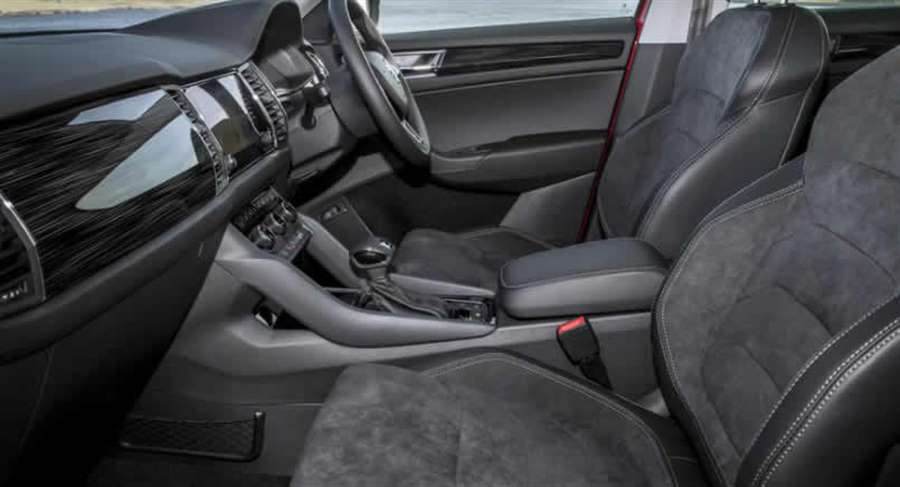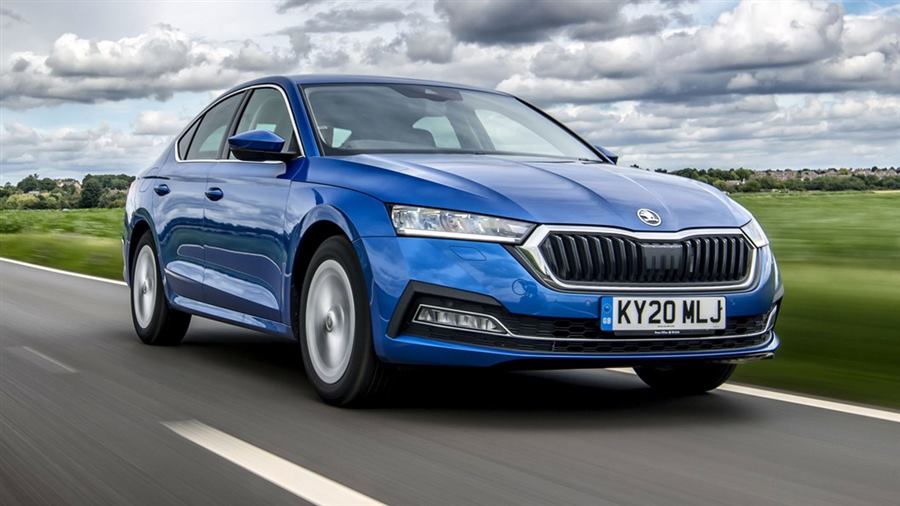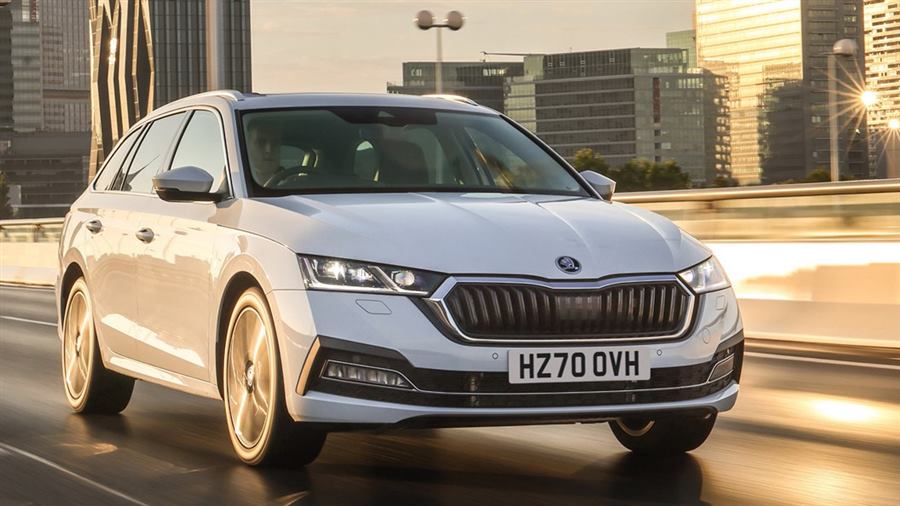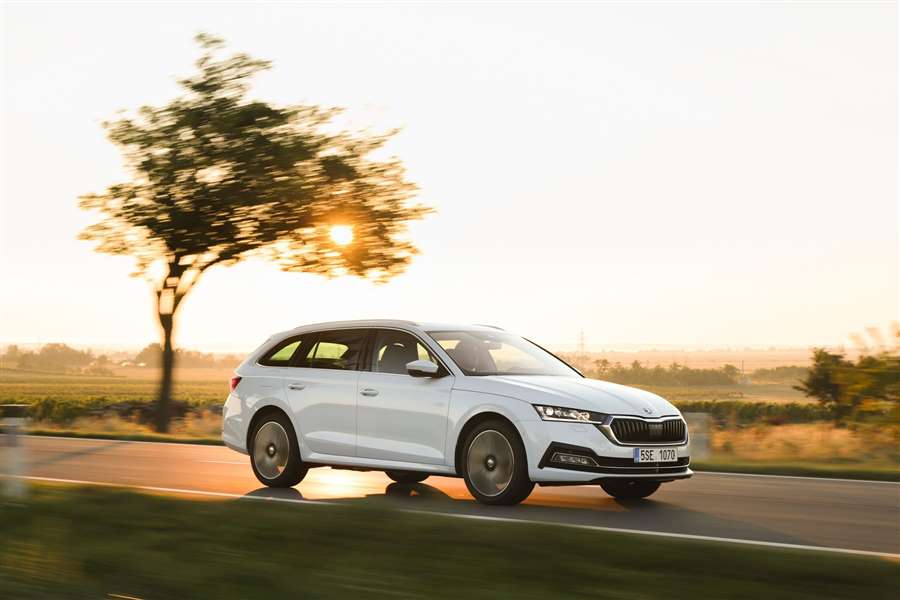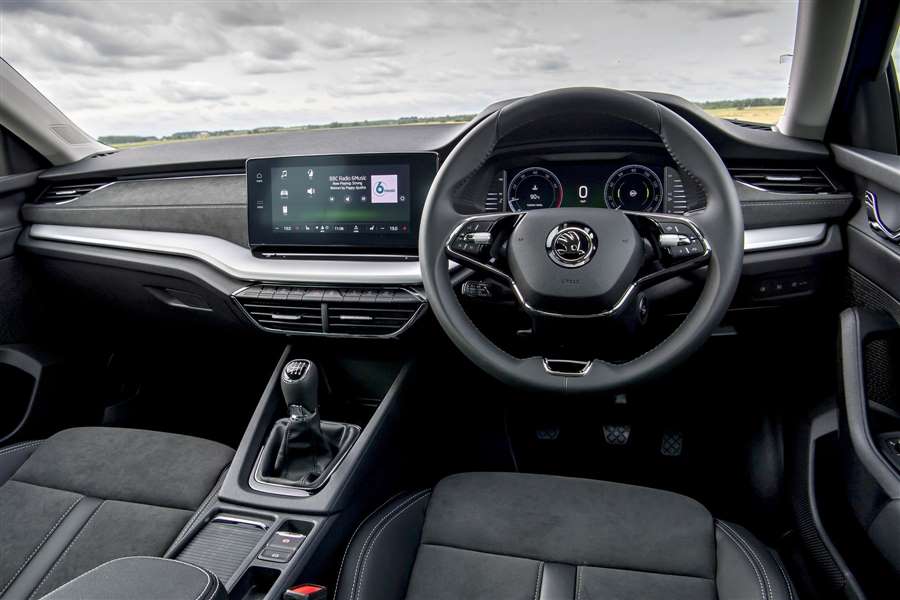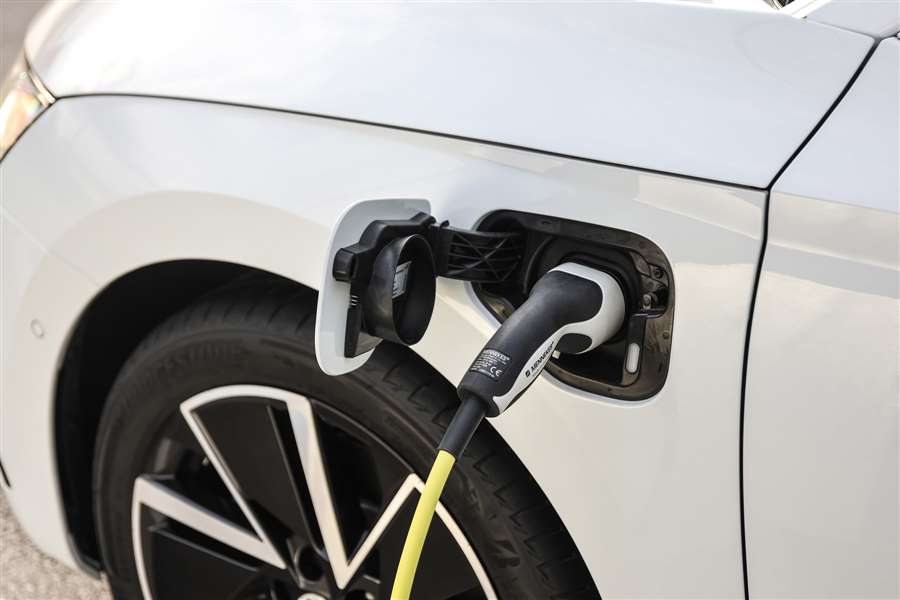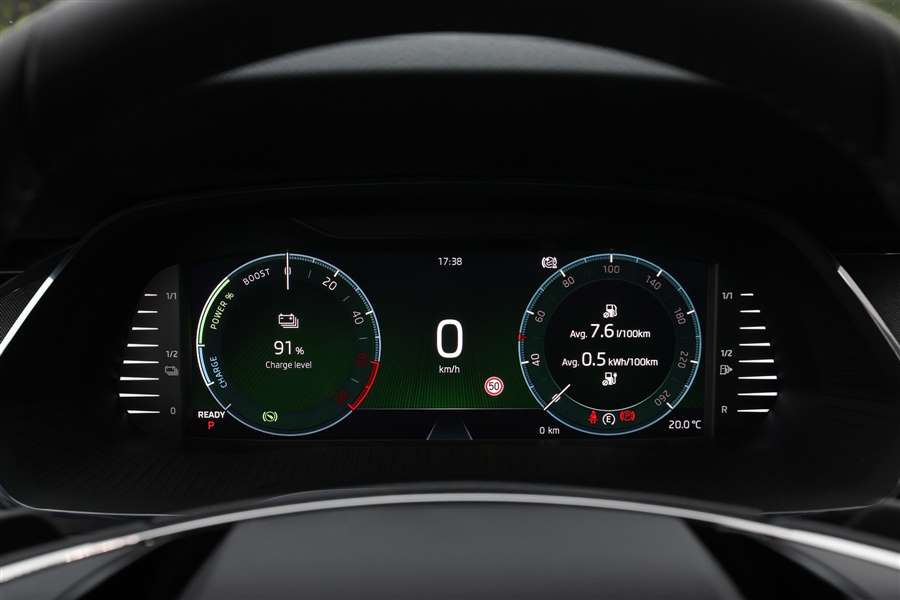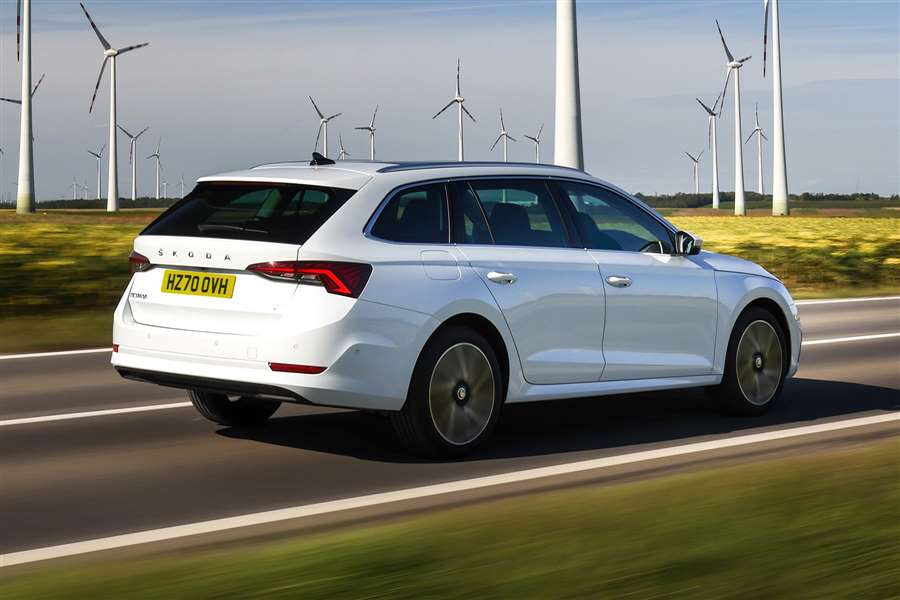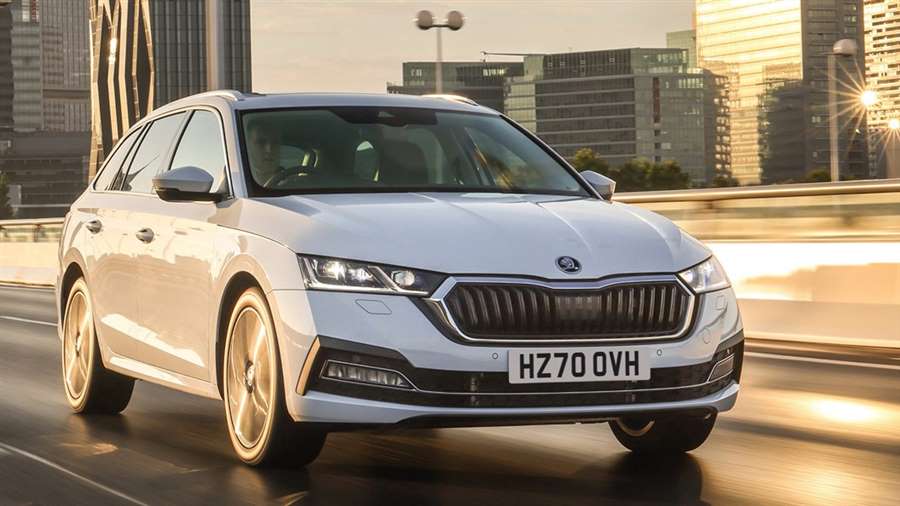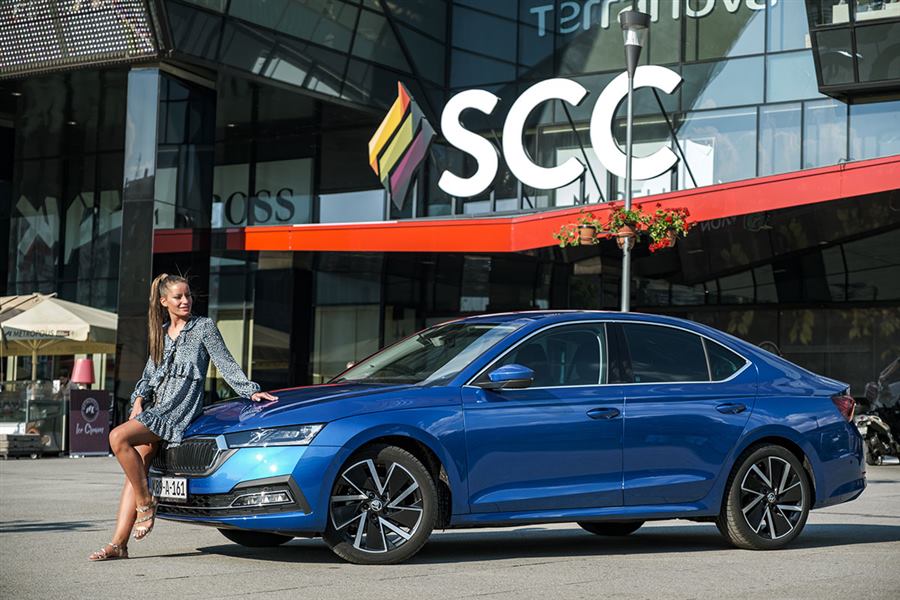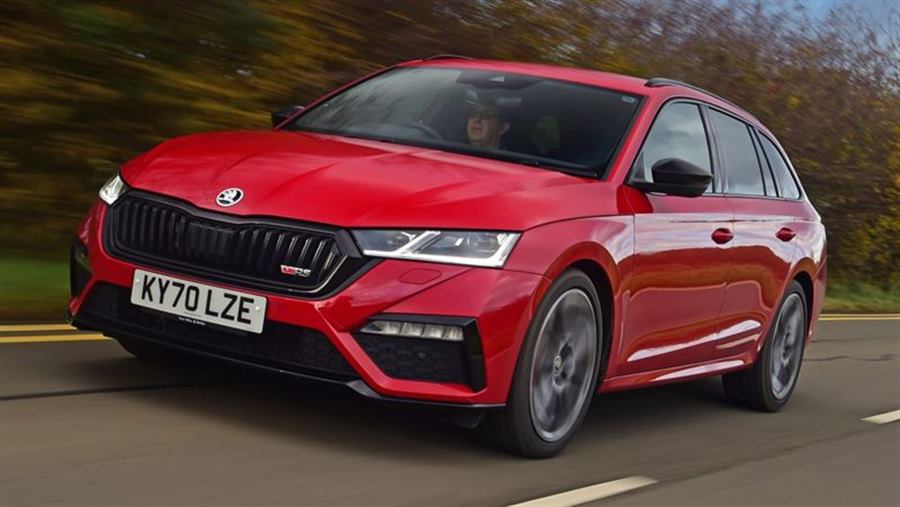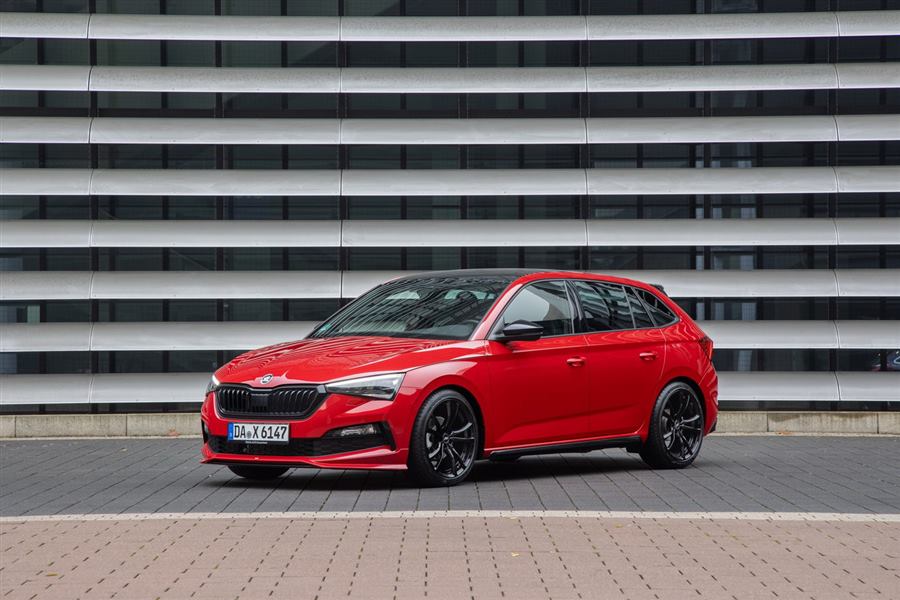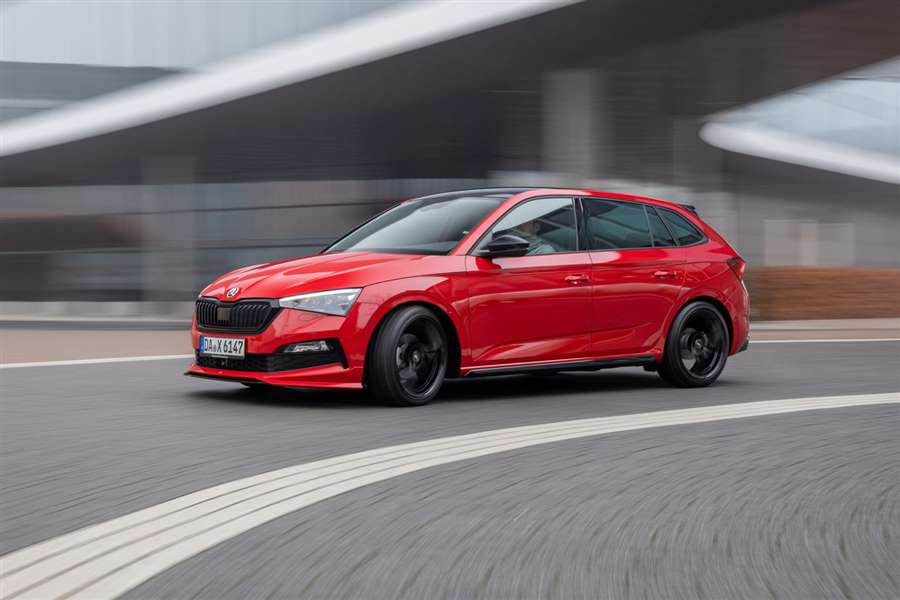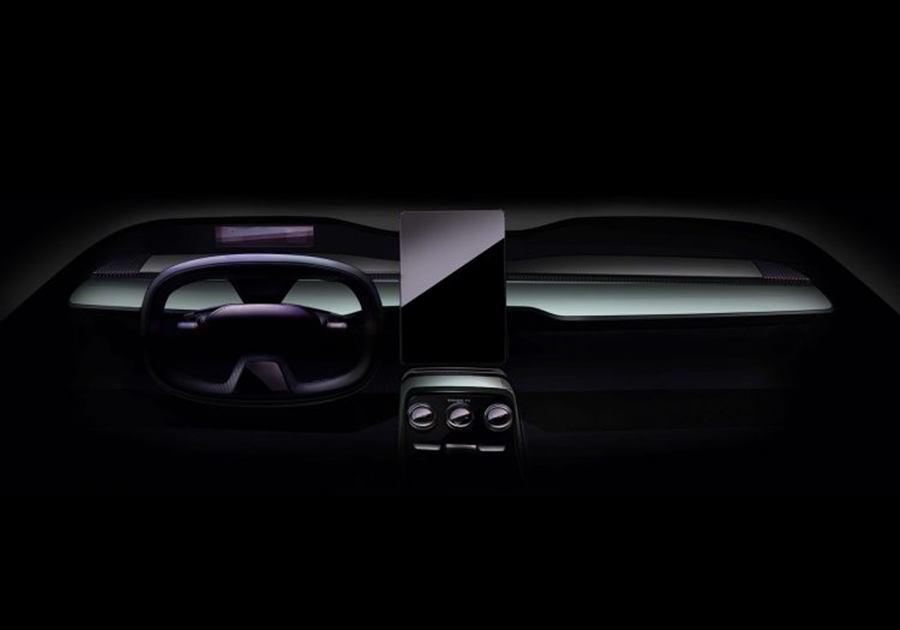“The Skoda Octavia vRS Estate offers great performance, technology, space and choice”
The vRS version of the Skoda Octavia hatchback might be swamped with hot hatch rivals, but the vRS estate occupies a less competitive area of the market. Its main rival for the moment is the Ford Focus ST Estate, while the Cupra Leon ST and Volkswagen Golf GTD Estate will aim to tempt you to a different part of the VW Group empire when they arrive.
So there’s not too much choice for a fast estate of this size, but settle on the Skoda and you’ve got some decisions to make. Like before, you can pick from hatchback or estate body styles, petrol or diesel engines, manual or automatic gearboxes, and whether you want the power going to just the front wheels or to all four. Now there’s yet another option, with a new plug-in hybrid powertrain promising pace and big economy gains.
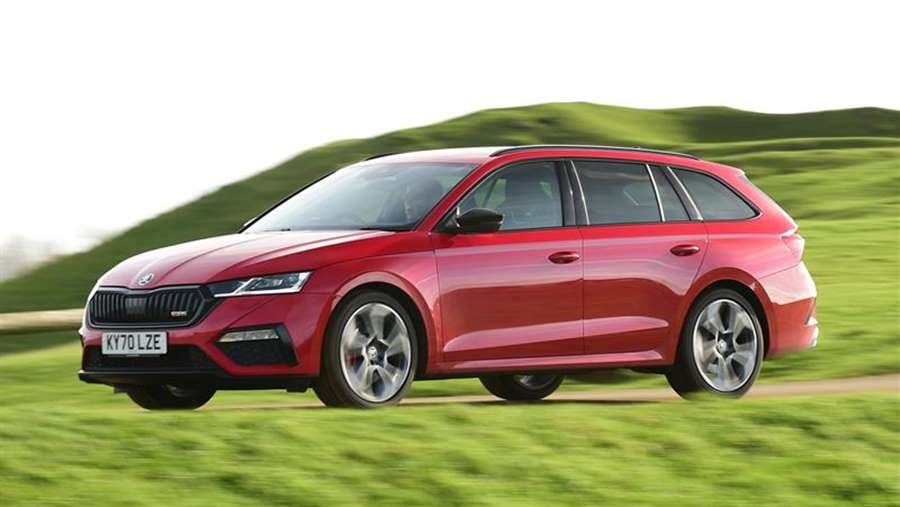
The low CO2 emissions makes it seem like a good option on paper but not all of the Skoda Octavia vRS iV estate’s quirks are appealing. The battery means it has the same ride height as the standard Octavia, so its stance is less sporty, sitting higher than the petrol and diesel vRS. The battery is heavy too, adding around 250kg and blunting the car’s performance somewhat, which results in a 0-62mph time of 7.3 seconds. The positioning of the battery under the boot floor also means the PHEV loses 150 litres of boot space compared with the regular Octavia vRS estate.
The petrol and diesel versions, meanwhile, follow the same tasty recipe as before, passed down through the generations and honed over time. Shared with the new Volkswagen Golf GTI and GTD, the Octavia vRS is offered with 242bhp petrol and 197bhp 2.0-litre diesel engines. Accelerating from 0-62mph takes 6.7 seconds in the petrol and we expect a figure of around 7.4 seconds for the more frugal diesel, which is slated to arrive in the first quarter of 2021 with the option of four-wheel drive.
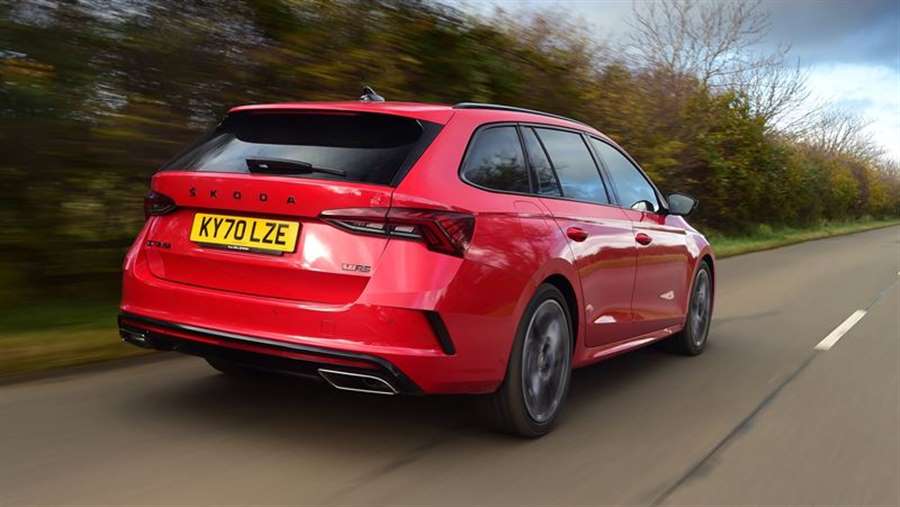
Whichever you decide on, all versions get pumped-up styling - like the bigger wheels, boot spoiler and black trim pieces - and a slightly racier interior than a standard Octavia. It’s quite a subtle upgrade, despite a flat-bottomed steering wheel, red stitching, more heavily bolstered seats and a couple of Alcantara suede-like trimmings. In truth, it’s probably what you’d expect from an Octavia vRS - the sportiness doesn’t get in the way of comfort and everyday usability. However, it's also noticeably less exciting than the GTI, with a muted engine and less agile handling. It's certainly a lot more practical, though, and several thousand pounds cheaper to buy.
MPG, running costs & CO2
New Octavia vRS iV plug-in hybrid promises a good electric range, while the diesel should be economical too
The new plug-in hybrid Skoda Octavia vRS iV version should be very economical indeed, as long as you regularly recharge the battery. Up to 37 miles of silent electric running can be achieved, and the tiny 27-36g/km CO2 figure will appeal to any company-car drivers eyeing up a vRS. Skoda’s claimed economy figure of up to 233mpg shows what might be achievable, but again this depends on the journeys you do and how often you top the battery up. The iV model is also several thousand pounds more expensive to buy over the conventional petrol and diesel models.
The vRS iV is fitted with a 13kWh battery, which is charged via a Type 2 connection port. A full charge takes three and a half hours when using a 3.6kW wallbox home charger. Owners can also use a three-pin domestic plug socket, which takes around five hours.
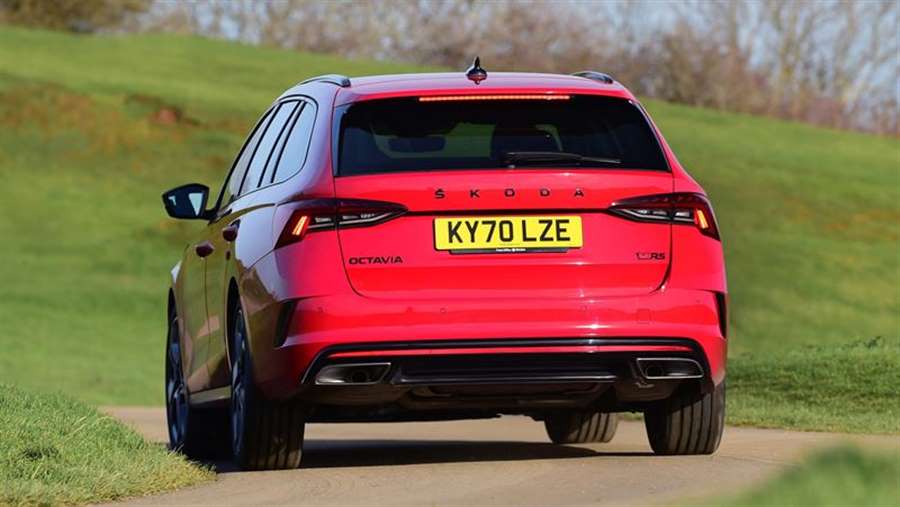
When running in hybrid mode on longer journeys, the car does a good job of stretching its battery life but you can expect it to be largely depleted after a few hundred miles. Equally, when running in pure-electric mode, if driven carefully, you can expect to have some charge remaining after around 25 miles.
With its turbocharged 2.0-litre petrol engine, the vRS manages significantly worse figures, returning up to 40.4mpg with its seven-speed DSG gearbox. Economy figures haven’t been finalised for the diesel version just yet but, given that the new car uses a similar engine to its predecessor, it’s highly unlikely the figures will be vastly different. Expect nearly 55mpg from the diesel, while CO2 emissions will put both in high Benefit-in-Kind tax brackets for business users, compared to the iV plug-in hybrid.
VED (car tax) costs £150 a year for the diesel and petrol, and cars costing more than £40,000 after options will incur an extra £325 surcharge until they’re six years old. The plug-in hybrid version will get a £10 annual discount. Skoda offers a pretty standard three-year/60,000-mile warranty, and you can buy service plans upfront or spread the cost out monthly.
Engines, drive & performance
Not the fastest, but the Skoda Octavia vRS estate offers decent performance
The big news for this latest Octavia vRS is the introduction of an iV plug-in hybrid. It’s the same system you’ll find in the Volkswagen Golf GTE, Skoda Superb iV and the Cupra Formentor SUV, so produces 242bhp and offers up a 7.3-second 0-62mph time. You might notice that’s a couple of seconds off some hot hatchbacks and estates, and the feeling of speed is blunted by the heavy battery. The last-gen vRS definitely feels that bit faster, even with the iV’s big torque reserve and a fake engine note pumped into the cabin.
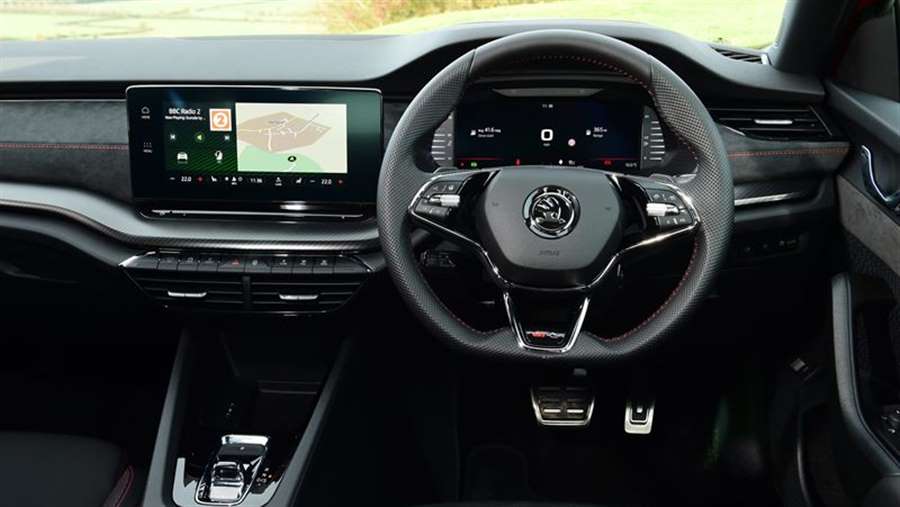
Weight distribution is further towards the rear with the battery underneath the boot floor, but there’s little to be gained from that as it feels like you reach the end of the car’s grip sooner. We suspect this isn’t helped by the tall ride height required by the battery (petrol and diesel models get lower suspension). That’s not to say you should immediately write off the plug-in hybrid; it’s the best choice if you want the sporty styling and will spend most of your time around town, which is where the vRS iV excels; the instant power of the electric motor and whisper-quiet running make it relaxing and refined. The transition from electric to petrol power is almost seamless, and you can choose how to use the powertrain - saving battery charge for later in the trip, for example.
Selecting Sport mode in the vRS iV highlights that the automatic gearbox can be rather sluggish; it feels like it holds the car back when you want to drive it more quickly. Using the steering-wheel mounted paddles to change gear yourself and force the car to hold on to gears for longer makes it very easy to spin the front wheels, thanks to the extra torque from the electric motor.
Gearbox aside, the Octavia vRS iV estate remains composed throughout faster corners thanks to stiffer suspension. The steering also provides a sharp and positive feel, giving you the confidence to accurately direct the car into corners.
The suspension may be stiff but it’s sophisticated enough that the vRS iV makes a very comfortable motorway cruiser, with only the roar from the standard 19-inch alloy wheels noticeable inside at high speeds. The only inherent drawback of using a PHEV for longer journeys is the economy drop once the battery for the electric motor is depleted.
The petrol engine has already impressed us in the Volkswagen Golf GTI. It has 242bhp, like the iV, but a quicker 0-62mph time of 6.7 seconds - and in the GTI it’s been tuned to feel more keen to rev to the limiter. For now, the fastest family estate in this price range is the Ford Focus ST, with its power advantage and 5.8-second 0-62mph time. Start the petrol powered vRS and the lack of drama is a bit disappointing - there's little to distinguish it from a regular 1.5-litre TSI, emitting a distant drone as you pick up speed.
On twisty roads there's a reasonable amount of punch out of corners, but the DSG automatic gearbox is keen to shift up relatively quickly, making the vRS feel swift and mature rather than blazingly fast. The steering is direct and a limited-slip differential helps the front tyres find grip in corners, but bumpy roads and sudden direction changes can unsettle the chassis and the Ford Focus ST Estate and Golf GTI are both more exciting to drive.
A six-speed manual or a seven-speed automatic gearbox are offered on the Octavia vRS, while the 197bhp diesel only comes with the latter - but you can add all-wheel drive. The diesel is likely to complete 0-62mph in around 7.4 seconds because it’s a little more powerful than the last car.
Interior & comfort
All the good bits of the standard Octavia with extra sportiness
Inside, the new Octavia vRS looks more futuristic than the car it replaces, thanks to a sleek two-spoke steering wheel and a large floating touchscreen. You do have to access the climate control through the screen but Skoda has provided a place to rest your wrist on the full-width trim piece intersecting the dashboard. The vRS-specific touches include a flat-bottomed wheel, red ambient lighting and sports seats, and it looks a little more restrained than the Ford Focus ST estate.
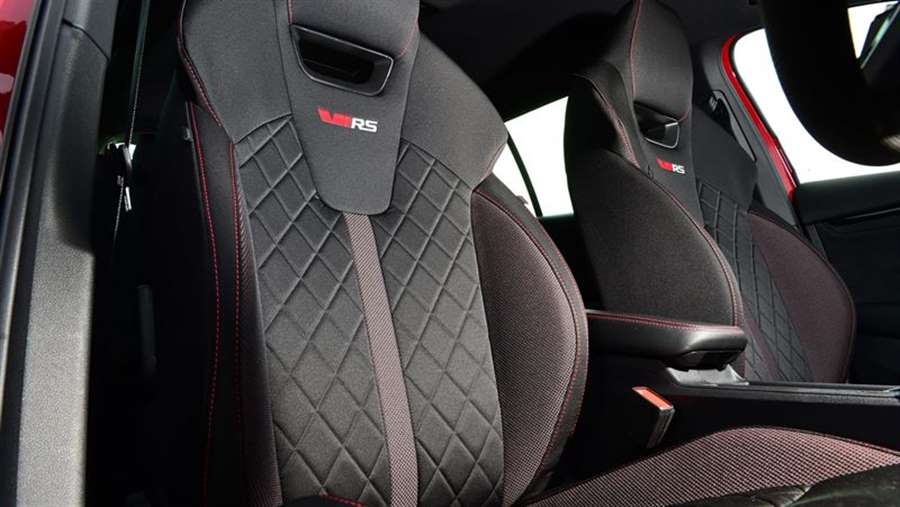
The vRS will come with a Virtual Cockpit digital instrument display, Matrix LED headlights, sat nav and multi-zone climate control. There's also a diamond stitching pattern for the seats with integrated headrests. Options will include extra driver assistance technology, bigger wheels and a couple of equipment packs. It's also possible to add a Canton premium stereo system with 12 speakers, adjustable suspension, a panoramic sunroof, a head-up display and an electrically powered tailgate.
Practicality & boot space
Space and pace; the Skoda Octavia vRS estate offers a vast boot and lots of passenger room
Skoda didn’t need to make the Octavia’s boot any bigger - it was already class-leading - but the new car is even more cavernous. The boot capacity isn’t affected in the petrol and diesel vRS models, so you get 640 litres to fill. That’s the same as the Mercedes E-Class estate, which is class-leading itself and a bigger car than the Octavia.
Skoda Octavia vRS Estate boot20
The Octavia vRS iV plug-in hybrid doesn’t have so much to boast about, as the positioning of the batteries means you lose some of that huge boot. It shrinks by 150 litres; 490 litres doesn’t sound so impressive but it’s still roughly the same as you get in the BMW 3 Series Touring. It does however feature clever underfloor storage for the charging cables and means the vRS iV estate gets a completely flat load area.
At least there’s room for your passengers to stretch out, regardless of the engine you pick. Unlike most estates this size, the Octavia allows three adults to sit side-by-side across the back row. There are an array of storage areas, plus Skoda’s Simply Clever touches like a parking ticket holder and an integrated ice scraper.
Reliability & safety
Skoda has achieved the best customer satisfaction in the VW Group
It’s almost hard to believe that Skodas were mocked just a couple of decades ago; now, they’re customer favourites and consistently score highly in our Driver Power owner satisfaction survey. In 2020, the brand finished in fifth place out of 30 manufacturers, with build quality, practicality and infotainment all praised. The previous-generation Octavia finished 34th in the list of the top 100 cars on sale, and we’d expect the new car to build on that.
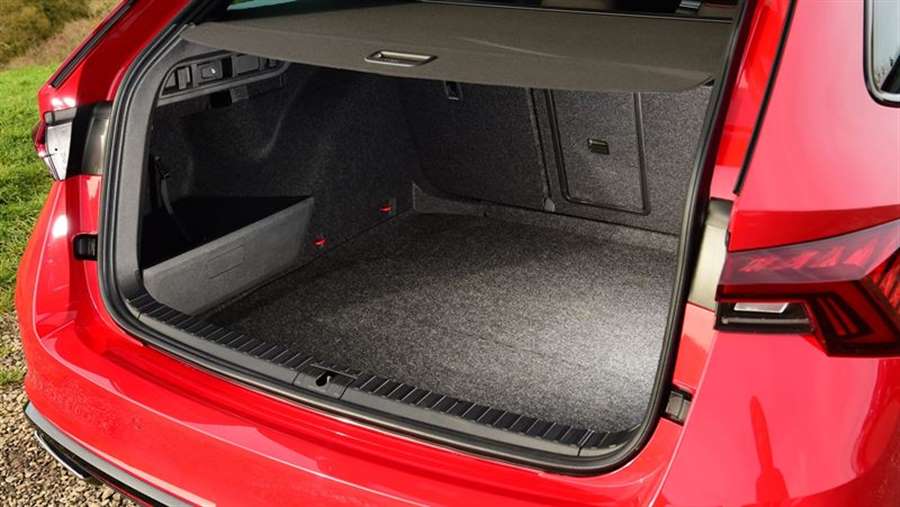
We’ll be shocked if the new Octavia scores anything less than a five-star Euro NCAP safety rating; the VW Group’s family cars all get positive scores in crash tests. Safety systems are extensive, with collision avoidance assistance, an exit warning system and lane-departure warning. You can add even more kit to the options list.
Source: carbuyer.co.uk




